Dear Families,
Now more than ever, play is crucial in the lives of our children. To thrive in today’s fast-changing world, people of all ages must learn to think and act creatively — and the best way to do that is by focusing more on imagining, creating, playing, sharing, and reflecting, just as children do through play. As their advocates, we need to ensure that we are providing our learners with opportunities to stimulate their sense of wonder and spark their curiosity.
Play is not only beneficial for healthy brain development but also serves as a coping mechanism for anxiety and provides a buffer for stress, meltdowns, and negative feelings. Play is the pathway toward building strong academic skills and is essential for social and emotional resilience. Using play and a playful spirit as a means to let children work on projects, passions-driven inquiries, in collaboration with peers (remotely), we can help them prepare for a world where creative thinking is more important than ever before. REMEMBER: we are navigating through uncertain times and expectations. Play allows children to become adaptive, resilient, collaborative, and imaginative and to work with changes and challenges as they occur.
In honor of PLAY, we will be hosting a “Play Each Day” for each day of the week, beginning Monday, April 27, through Friday, May 1. Our goal is to help families and facilitators use play as a vehicle to allow children, in all grade levels, to complete assignments by using their imaginations and immersing themselves in creativity, discovery, and joy. Because PLAY is so vital, the activities during “Play Each Day Week” are not something “extra to do”; rather, they will be part of each learner’s work for the week.
To launch “Play Each Day Week” and learn more about the research and benefits of play, we are offering a Zoom Parent University on Friday, April 24, at 3:30 p.m. We hope you will join us! The Zoom code will be emailed home, and the session will be recorded for later viewing.
Please take pictures of your child playing, and send them to your child’s facilitator and Miss Bybee aidan.bybee@ileadaguadulce.org so we can include them on our social media pages and in video!
“It must not be forgotten that the basic law of children’s creativity is that its value lies not in its results, not in the product of creation, but in the process itself. It is not important what children create, but that they do create, that they exercise and implement their creative imagination.” —Lee Vtgowsky
There is no right or wrong way to play. The most important part of play is the process and not the final product. So we ask that the adults step back and allow the learners to lead while you foster their innate sense of curiosity. Let the play begin! Please take a look at the ideas below, make them your own, adapt them, change them, but most of all HAVE FUN and enjoy the process
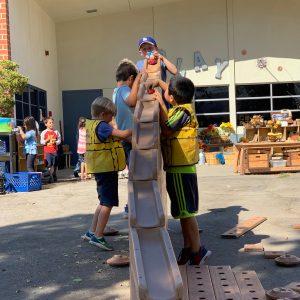 Monday
MondayOh “My” Design!
Design challenges help children to think critically and problem-solve. Design engineering helps children to define problems, create prototypes, and hone those prototypes through multiple repetitions until they have generated a viable solution or solutions.
IDEAS:
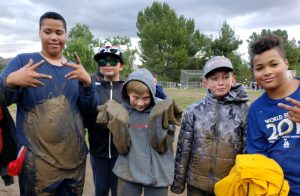 Tuesday
TuesdayDress for a Mess!
Immersive play, which includes sensory, mud, and unstructured art, supports language development, cognitive growth, fine/gross motor skills, problem-solving, and reasoning. This type of play stimulates the imagination and opens the heart and mind to possibilities.
IDEAS:
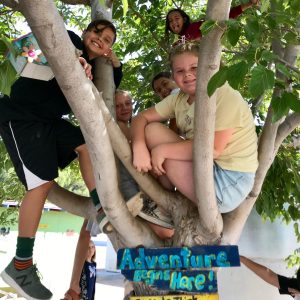 Wednesday
WednesdayIncredible Imagination
Dramatic/pretend play encourages children to put themselves in someone else’s shoes. Role-playing helps them to improve their ability to do this in real life. It is a time when children break through the walls of reality, pretend to be someone or something different from themselves, and dramatize situations and actions to go along with the roles they have chosen to play. This type of play is essential for children to help cope with difficult situations and stress. It aids in helping them to make sense of the world around them.
IDEAS:
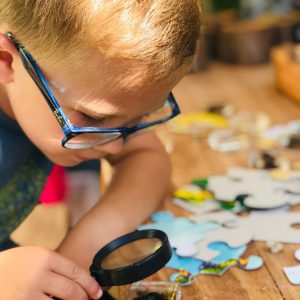 Thursday
ThursdayCultivating Curiosity
Instilling a sense of wonder and curiosity is a powerful tool. Children are innately curious, and it is up to us to ensure that we foster it. The best learning stems from curiosity; it is through curious exploration that people become problem-solvers and innovators.
IDEAS:
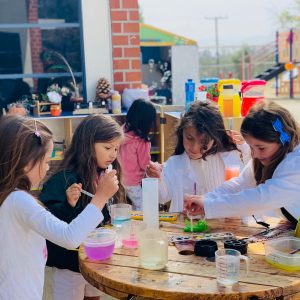 Friday
FridayFind Your Passion
When children are in the driver’s seat of their learning, there is no limit to what they can achieve. Foster their inquisitiveness through meaningful conversations and observations. Know that exploring something that brings joy leads to self-confidence, perseverance, and self-awareness. It also inspires children to dive deeper into a subject and makes them more willing to take risks.
IDEAS:
According to the latest research:
“It takes over 400 repetitions to create a synapse in the brain (true learning) without playful engagement…
OR
It takes about 12 repetitions to create a synapse when you use play to teach.”
We are shining a spotlight on the wonderful Ms. T, our dedicated counselor who makes iLEAD Agua Dulce feel like family. Please tell us about your background and how you… Read More
A friendly reminder that Tuesday, November 18, is iLEAD Agua Dulce’s Class Picture Day and Picture Retake Day for all grades TK-12. This is the perfect opportunity for: All learners… Read More
Girl Scout Troop 1755 is hosting a food drive on iLEAD Agua Dulce’s campus November 4-21. They are collecting nonperishable food donations to support the Santa Clarita Valley Food Pantry,… Read More
